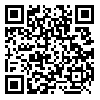مجله رویش روانشناسی از دادن گواهیهای کاغذی معذور است. لطفا تقاضا نکنید. همه گواهی ها در صفحه شخصی کاربران موجود است.
year 10, Issue 2 (spring 2021 2021)
Rooyesh 2021, 10(2): 103-112 |
Back to browse issues page
Download citation:
BibTeX | RIS | EndNote | Medlars | ProCite | Reference Manager | RefWorks
Send citation to:



BibTeX | RIS | EndNote | Medlars | ProCite | Reference Manager | RefWorks
Send citation to:
Asgariyan Z, Rezaei Kheirabadi M. (2021). Predicting adolescent’s internalized shame based on social anxiety, relationship with parent, self-esteem and self- efficacy. Rooyesh. 10(2), 103-112.
URL: http://frooyesh.ir/article-1-2492-en.html
URL: http://frooyesh.ir/article-1-2492-en.html
1- M.Sc. Clinical Psychology, Department of Psychology, Faculty of Psychology and Educational Sciences, University of Isfahan, Isfahan, Iran.
2- M.Sc. Clinical Psychology, Department of Psychology, Faculty of Psychology and Educational Sciences, University of Isfahan, Isfahan, Iran. ,rezaei257@gmail.com
2- M.Sc. Clinical Psychology, Department of Psychology, Faculty of Psychology and Educational Sciences, University of Isfahan, Isfahan, Iran. ,
Abstract: (2984 Views)
Internalized shame is a very painful negative emotion that is accompanied by feelings of humiliation, inferiority, and worthlessness. The aim of this study was to predicting juvenile internalized shame based on social anxiety, relationship with parent, self-esteem, and self-efficacy. The research method was correlational. The statistical population included female students aged 15 to 19 years in Dehaghan city who were studying in the 2019-2020 academic year and the statistical sample included 270 people who were selected as available. Research tools included the Cook (1993) The internalized shame scale, Rosenberg (1979) The self-esteem scale, Sherer and Maddux (1982) The self-efficacy scale, Fain (1983) The Parent-Child Relationship survey, and Connor (2000) The social phobia Inventory. Data were analyzed using Pearson correlation and stepwise regression. The research findings showed that social anxiety and internalized shame at the level of 0.01 is a positive and significant relationship and self-esteem, relationship with a parent, and self-efficacy with internalized shame is a negative and significant relationship(P<0.01). Also, the results of regression analysis showed that the predictor variables explain 33% of the variance of internalized shame. The results of this study help identify the factors influencing the internalized shame and show the need for more attention of parents and officials to these factors to reduce the suffering of juveniles.
Type of Article: Research |
Subject:
Clinical Psychology
Received: 2020/12/6 | Accepted: 2021/01/7 | ePublished: 2021/04/30
Received: 2020/12/6 | Accepted: 2021/01/7 | ePublished: 2021/04/30
Send email to the article author
| Rights and permissions | |
 |
This work is licensed under a Creative Commons Attribution-NonCommercial 4.0 International License. |







